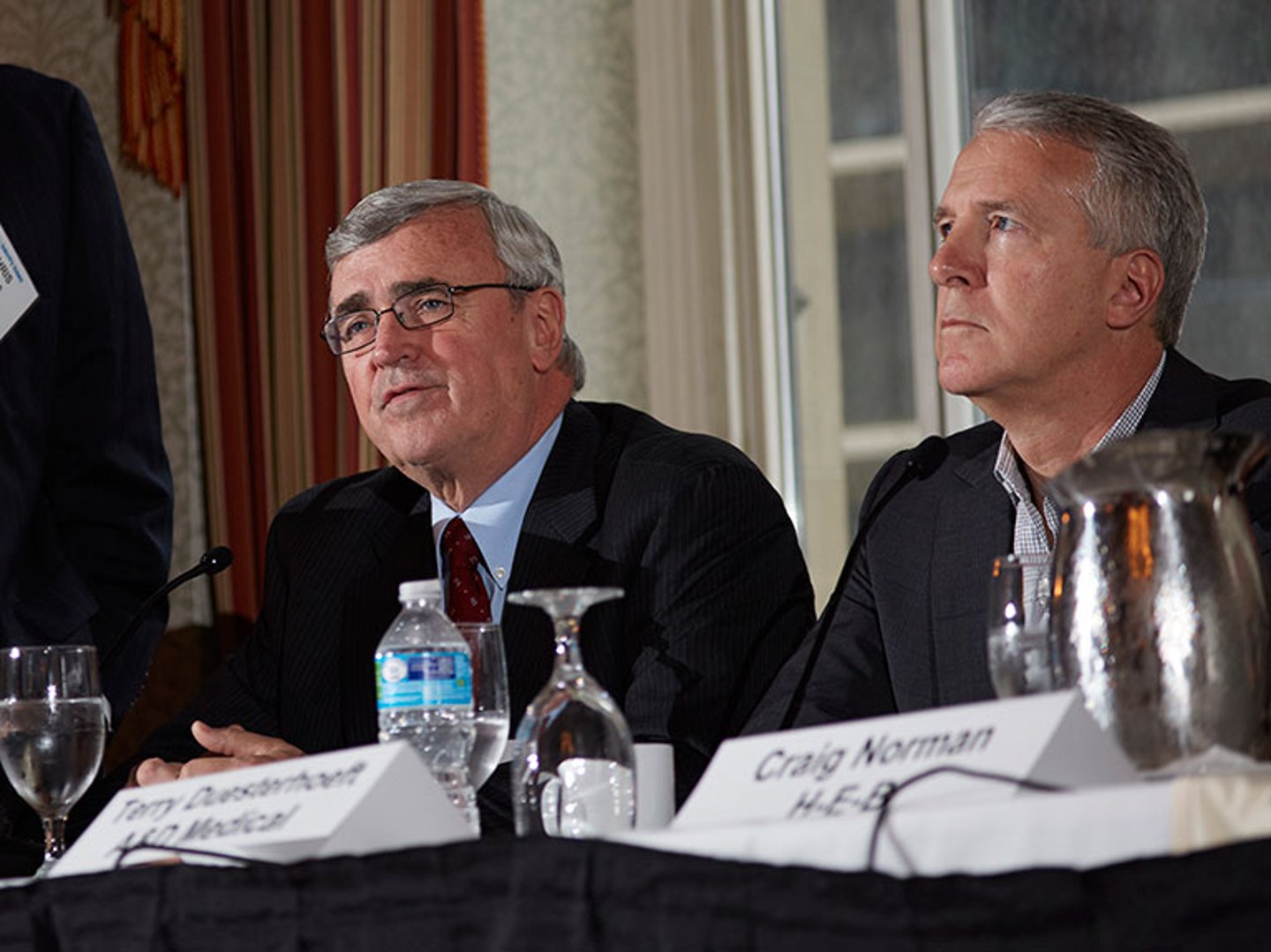John Fegan, 43-year industry vet, retires from Southeastern Grocers
JACKSONVILLE, Fla. — John Fegan, Southeastern Grocers’s VP pharmacy who began his retail pharmacy career in 1973 at Osco Drug will be retiring, Southeastern Grocers confirmed Monday evening.
“John has been with Winn-Dixie for nine years and has led the pharmacy business with enthusiasm," Southeastern Grocers corporate communications manager Joe Caldwell told Drug Store News. "Southeastern Grocers would like to thank John for his years of support and commitment to SEG, and wish him all the best for the future.”
Some of the most marked progress for pharmacies under his leadership in Fegan’s 43-year career has taken place since 2008, when he became Winn-Dixie’s VP pharmacy three years before its 2011 acquisition by Bi-Lo Holdings, which became Southeastern Grocers in October 2015 following years of growth. His work since joining Winn-Dixie has been characterized by his efforts to expand pharmacy services and medication accessibility over a period of time that saw the American healthcare system — and pharmacy's role within it — change dramatically.
Fegan joined Winn-Dixie from Ahold USA, where he oversaw more than 400 pharmacies within the company’s Stop & Shop and Giant divisions. Once there, he got to work on Winn-Dixie’s health and wellness initiatives, working in 2010 to build customers’s trust while helping them navigate a changing healthcare environment.
“Our stated mission is to earn trust and loyalty every day,” Fegan told Drug Store News in 2010. “Trust comes from having the best products and the best services available at the right price. From the pharmacy perspective, we [also] would want to provide the most inclusive information available in the marketplace to assure the overall health and well-being of the patients that we serve.”
In the years before Winn-Dixie’s acquisition, Fegan oversaw the expansion of pharmacy services beyond filling prescriptions. Among the efforts made during this time was the implementation of training programs for pharmacists to provide immunizations and medication therapy management, to the point where in 2011, all but 30 of the company’s more than 800 pharmacists were certified to vaccinate patients and 400 were MTM-qualified.
At the same time, Fegan oversaw the expansion of its prescription program, which in 2013 became linked to Bi-Lo’s BonusCard and expanded discounts to more than 450 generics, offered free blood pressure and diabetes medication and included varied discounts on certain brand-name drugs for an enrollment fee of $5. The company also offered screenings for such conditions as colorectal cancer through its "Test for Life Campaign"
“Not everyone has insurance or health benefits that adequately cover prescriptions,” Fegan said at the time “This expanded program offers significantly deeper services to our customers, provides a wider array of discounted medications and is significantly easier for our customers to use now that it runs directly through our BonusCard."
In 2014 — the same year the company closed its acquisition of Harveys, Sweetbay and Reid’s Banners from Delhaize Group, and acquired several Piggly Wiggly Stores — Bi-Lo and Winn-Dixie’s pharmacies introduced their medicatisynchronizationion program, Refill Sync. By April 2015, Fegan was overseeing 527 pharmacies across Bi-Lo’s 800 supermarkets and Refill Sync had 40,000 enrollees.
“Our pharmacists did a great job of talking to the patients we serve,” Fegan told Drug Store News in 2015. “The goal is to improve the overall health of the patients that we serve by having them be compliant and persistent on the medications they’re supposed to be taking.”
Fegan participated in the Tech Roundtable at DSN’s 2014 Industry Issues Summit, where he spoke about the characteristic that differentiates one pharmacy from another — namely, a focus on service that he worked to emphasize over his time in the industry and in the face of a shifting industry landscape that places emphasis on pharmacy’s impact on outcomes.
“I’ve said this before, … the services we offer are probably more important — or at least as important— as the products we offer,” Fegan said. “Everybody has the same product. How do you interact with the patient? What services do you provide?”

